A love of all things romantically faded and careworn inspired Alessandro Michele to turn a grand Roman apartment into his home, one teeming with centuries of history.
Alessandro Michele looks for a home in every city he visits, entertaining romantic visions for himself, and often following up on them. He has a particular love for faded beauties, run-down places brimming with history and lost grandeur—and this is why he has embarked on the quixotic endeavor of renovating one of the most iconic and mysterious buildings in Rome: Palazzo Scapucci.
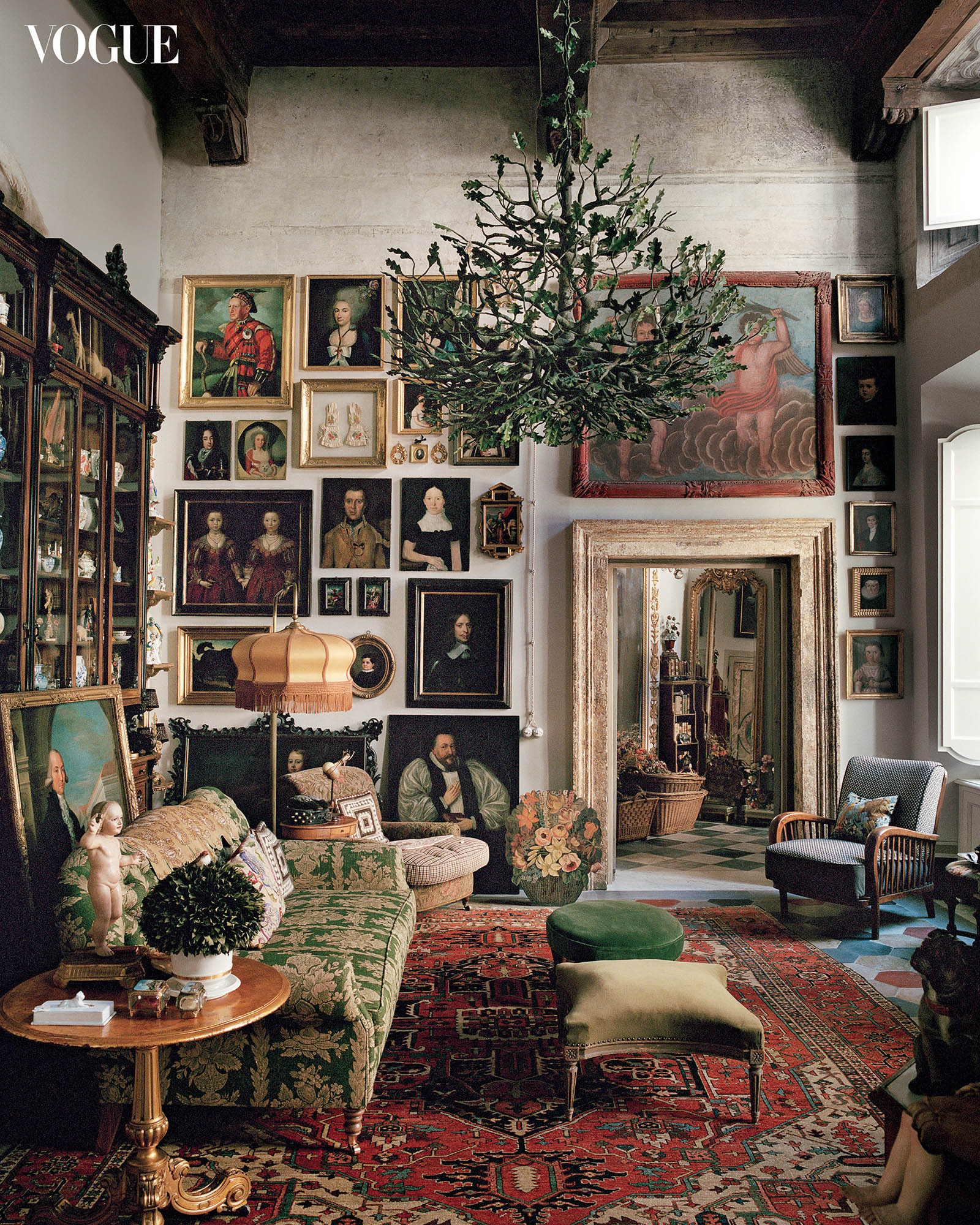
An elaborate oakbranch-shaped chandelier hangs in the second living room of Alessandro Michele’s sprawling Roman apartment. Opposite: A mantelpiece crowded with pottery warms up an entryway. Sittings Editor: Gianluca Longo.
As a teenager in the early ’90s, Alessandro strolled the Eternal City with a solitary, focused look. Bright green hair held up in a mohawk, he was the only punk kid in his neighborhood. Merely standing at the bus stop was an adventure. He attended a conservative high school in the bourgeois and old-fashioned Quartiere Trieste, and nevertheless fell in with a group of anarchist friends before moving on. Rome has always been the backdrop for his adventures, for walks to the center, to Babylonia and Dakota, two long-lost avant-garde warehouses that blasted deafening techno and sold refurbished or painted Converse All Stars, Palladium sneakers, as well as Indian silk scarves, heavy metal jewelry, fishnets, and industrial punk clothing. Outsiders from all parts of Rome flocked to these safe havens, gathering to shop, listen to music, and share ideas.

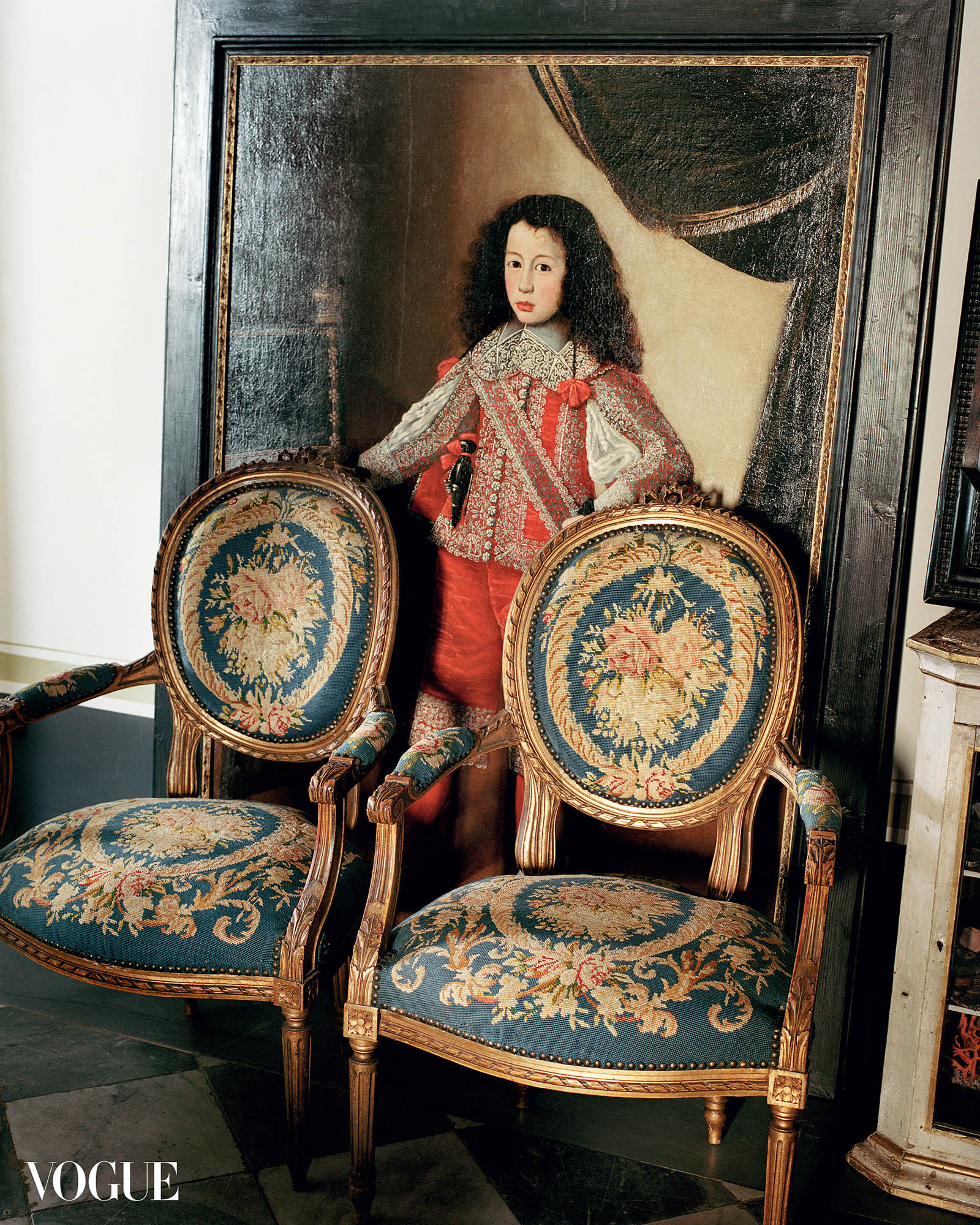
Alessandro’s uncle had a studio restoring antique furniture tucked in the gardens of Via Margutta, and there Alessandro would smell the glue and mastic and dream of the past lives of tables and armchairs. He also spent hours in the Villa Giulia, the Renaissance palace that houses the National Etruscan Museum, immersing himself in its gardens, exploring pre-Roman antiquity and terra-cotta funerary monuments. While his peers were out late at raves, and gathering in the central piazzas for the infamous aperitivo tradition, Alessandro was looking up at roofs and domes, waiting for buildings to speak to him. “Rome,” he says, “bewitches you. It welcomes everyone in a disheveled way.” That fascination transferred to objects, art, books, and obviously clothes. So much of the way in which he revolutionized Gucci over his nearly eight-year run as creative director had to do with a guileless disposition toward untold stories, incursions into the past lives of ancient artifacts, monuments, and people.

Michele in front of a cabinet filled with some of his collected objets, including old pharmacy bottles and antique Italian porcelain. Opposite: A late 18th-century portrait and two late-19th-century chairs in petit point.
“I am a doctor for injured, dilapidated homes,” he tells me. “I buy places I think might need me, that have either been defaced or abandoned.” Alessandro and I are sitting in the renovated piano nobile apartment of the palazzo, he on a petroleum blue Tudor-era velvet armchair, lush dark braids framing his face. Some eight months after his exit from Gucci he has the calm, collected expression of someone who had seen it all and done it all and is happy to take a breather—though I am not sure working with a restoration team on an 800-year-old home counts as a break. Palazzo Scapucci is one of the few buildings in Rome with its very own medieval tower (where, in the 11th century, Saint Ottone Frangipane was supposedly born). In the 1400s, the surrounding structures functioned as a convent belonging to Pope Sixtus IV (during the restoration, Alessandro found original papal coats of arms from the late 1400s engraved in the high beams).
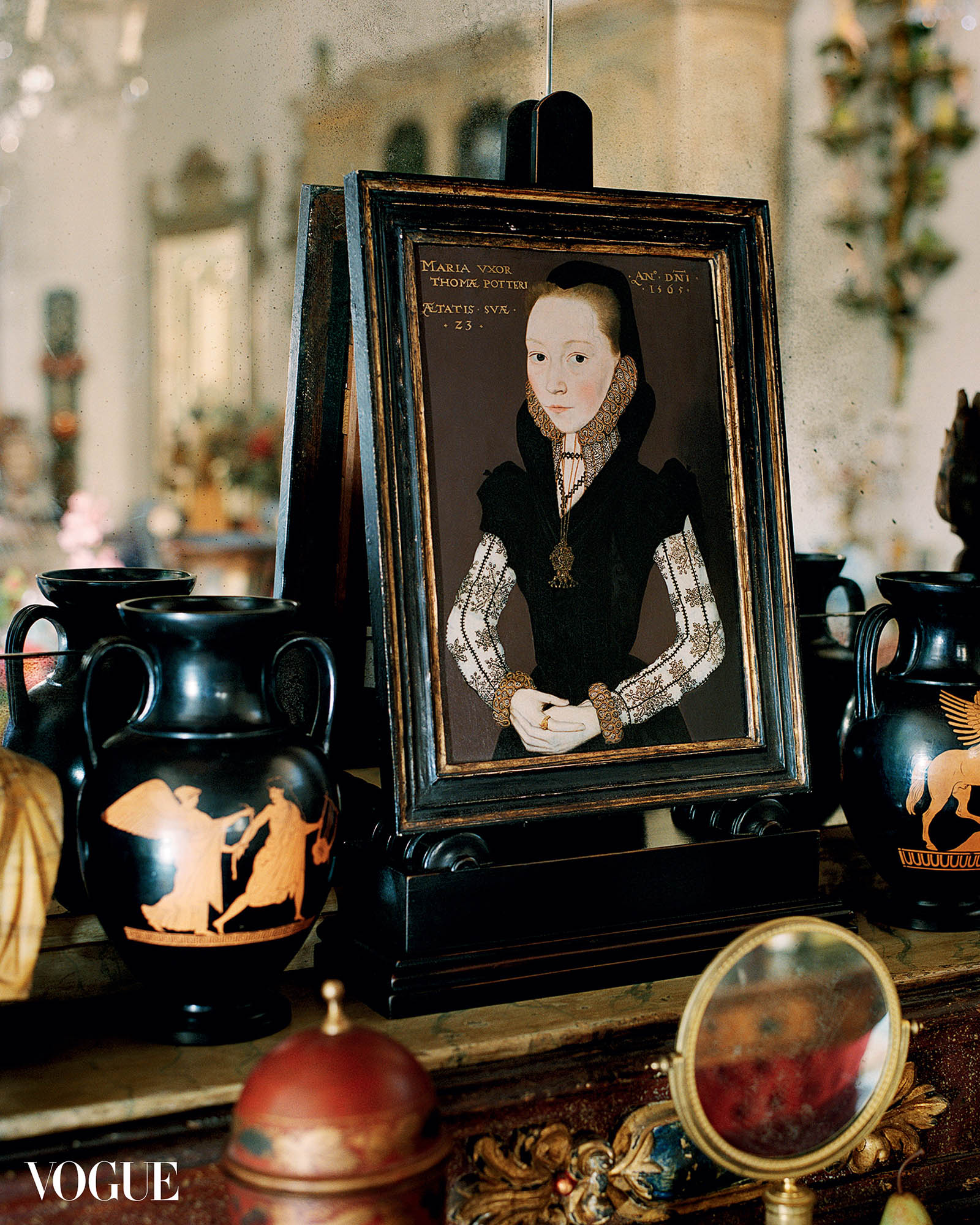
OBSESSIONS
Clockwise from left: A 16th-century portrait by the Master of the Countess of Warwick; the Delft tile–clad kitchen; Michele’s stately, art-filled dining room.
More than a century later the entire property passed on to the wealthy Scapucci family who are linked to a legend told by Nathaniel Hawthorne in his Passages from the French and Italian Notebooks, from 1871. As the legend goes, the Scapuccis had a beloved pet monkey who became unbearably jealous when their first child was born—so much so that she snatched the baby from the crib and escaped to the top of the tower, refusing to come back down. The father panicked and, as we tend to do in Italy during any moment of crisis, invoked the Virgin Mary, promising that if the baby were saved, he would keep an oil lamp perpetually lit in the tower in her honor. The miracle happened: The monkey returned the baby and the light at the top of the tower has been burning since.
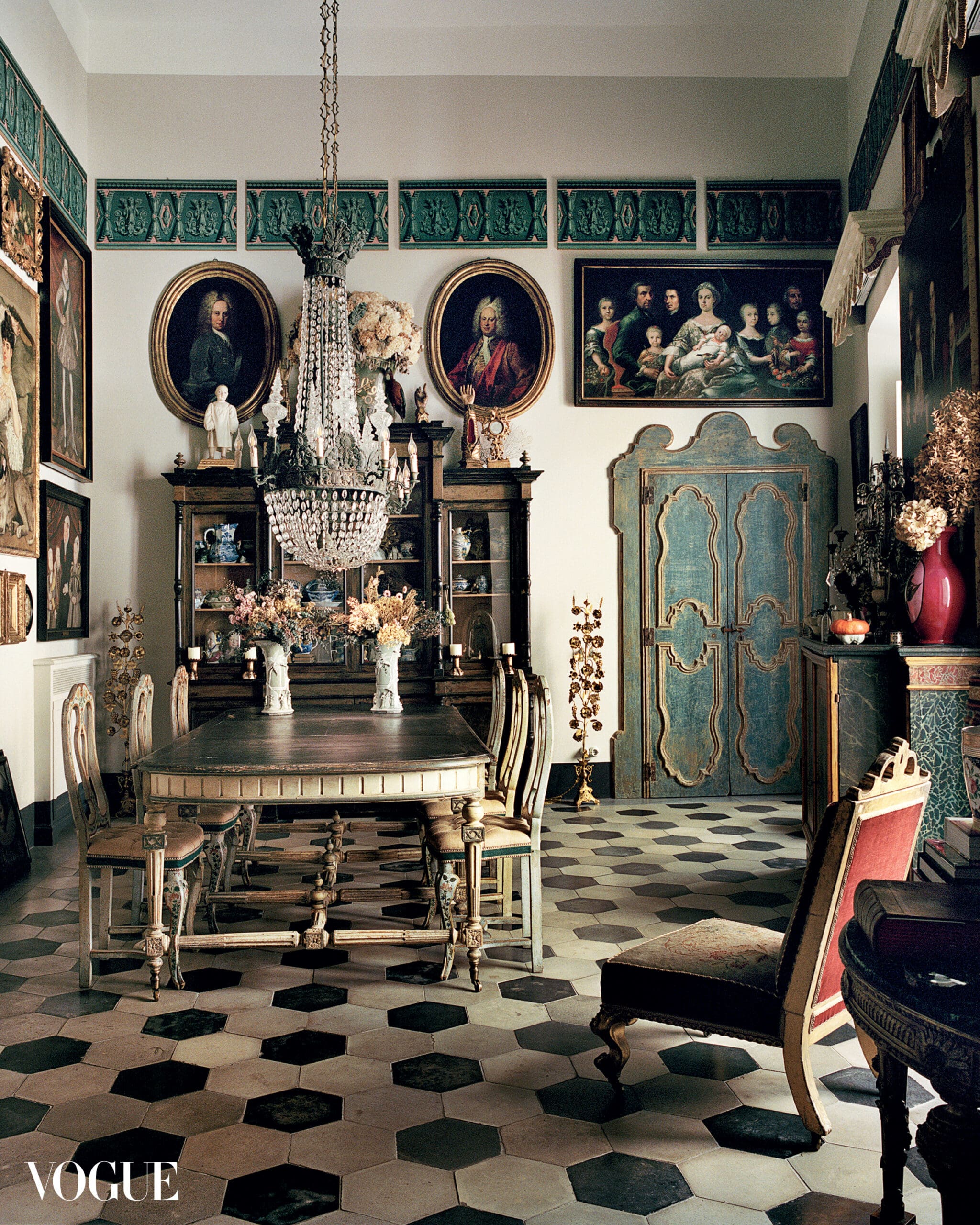

As Alessandro tells me this story, he moves his hands in the air, flashing his array of antique gold rings in space. To him such history is constantly with us. “I’m not convinced time passes as the calendar or the clock describes it,” he says. “The 800 years of these walls are right now to me. For this reason I am not nostalgic. I’m never really convinced that people who are no longer alive are gone. Everyone leaves strong traces behind.”
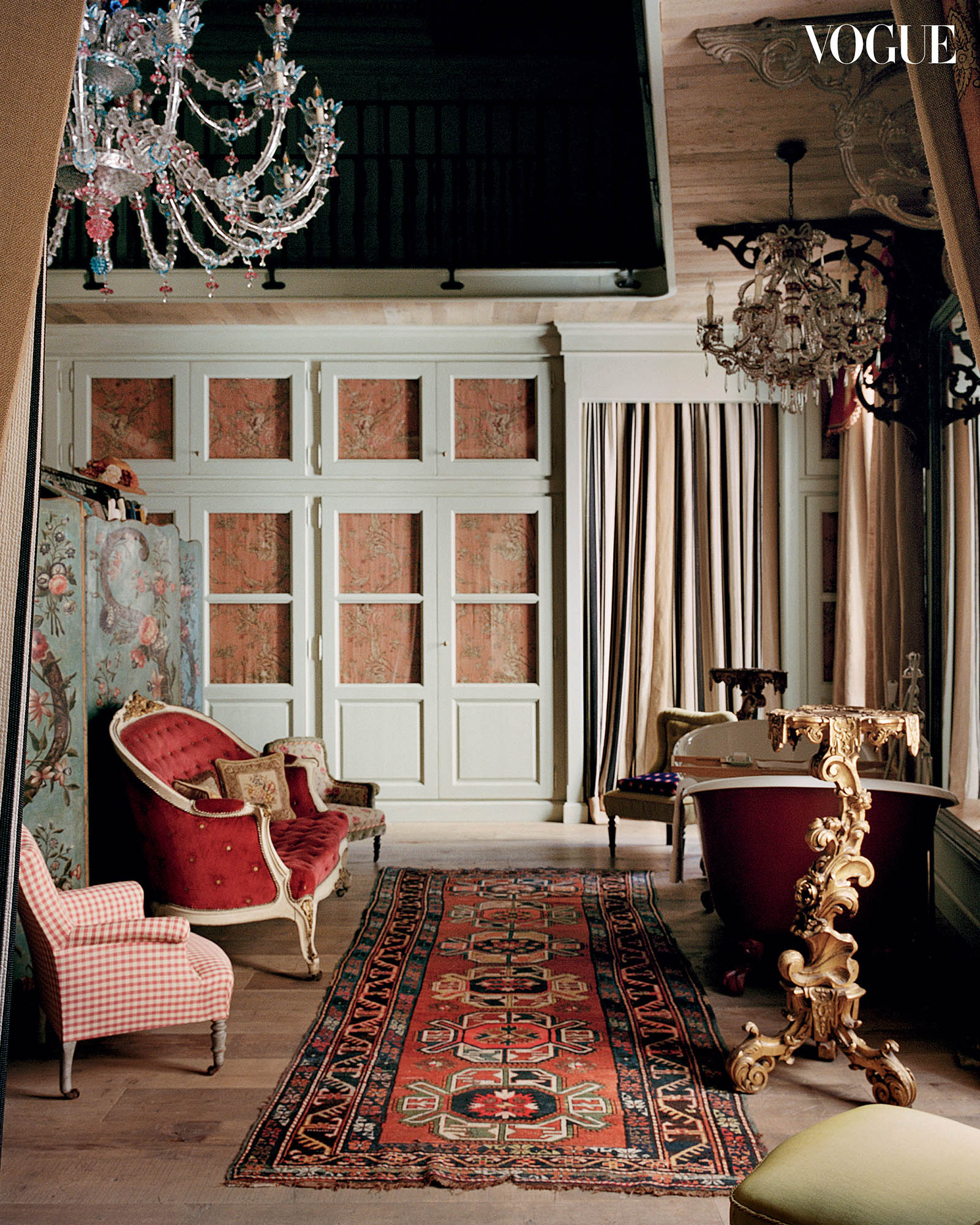
Above: A side table with—among other things—Attic, Apulian, Etruscan, and Delft vases, Staffordshire porcelain dogs, and a terra-cotta ox. left: Michele’s handsomely appointed wardrobe.
Alessandro’s father was a subversive free spirit who frowned upon the idea of ownership. He was part of the occupation committee of Lotta Continua, the 1970s far left political movement that fought to give housing to working families who couldn’t afford rent. “He had strong political beliefs, but also loved nature,” Alessandro says. “I’d say he was a pagan spirit, almost an animist. He would take us to the mountains and make us sit and listen. ‘You talk too much, be quiet,’ he’d say. ‘Listen to the wind passing over the leaves. That is God.’” When Alessandro’s family found they could no longer afford their house, they moved to squatted homes occupied by Lotta Continua in the northern end of Rome, a formative period for Alessandro.
But the stray life came at a high cost, especially for his mother, who had a less radical vision of the world. “We shared our space with families we didn’t know,” remembers Alessandro. “That’s where I got my first big life training, where I learned the art of observation and developed a real interest in people.” He watched strangers coming and going at odd hours of the night, and when adults spoke, he sat in a corner and listened. “There were prostitutes, drug dealers, poor mothers who had been kicked out of their prior homes. Extraordinary human beings with extraordinary faces. So I know how important it is when someone takes you in.” It’s no coincidence he has chosen to live across the street from the Baroque church of Sant’Antonio dei Portoghesi, which emerged out of a hospice for Portuguese pilgrims, a place for charity and restoration. He also plans to offer residencies for artists in his country home (in the magical Etruscan area of northern Lazio) and when he was at Gucci, his desk was a stopping point for many globe-trotting creatives who wanted to share ideas.
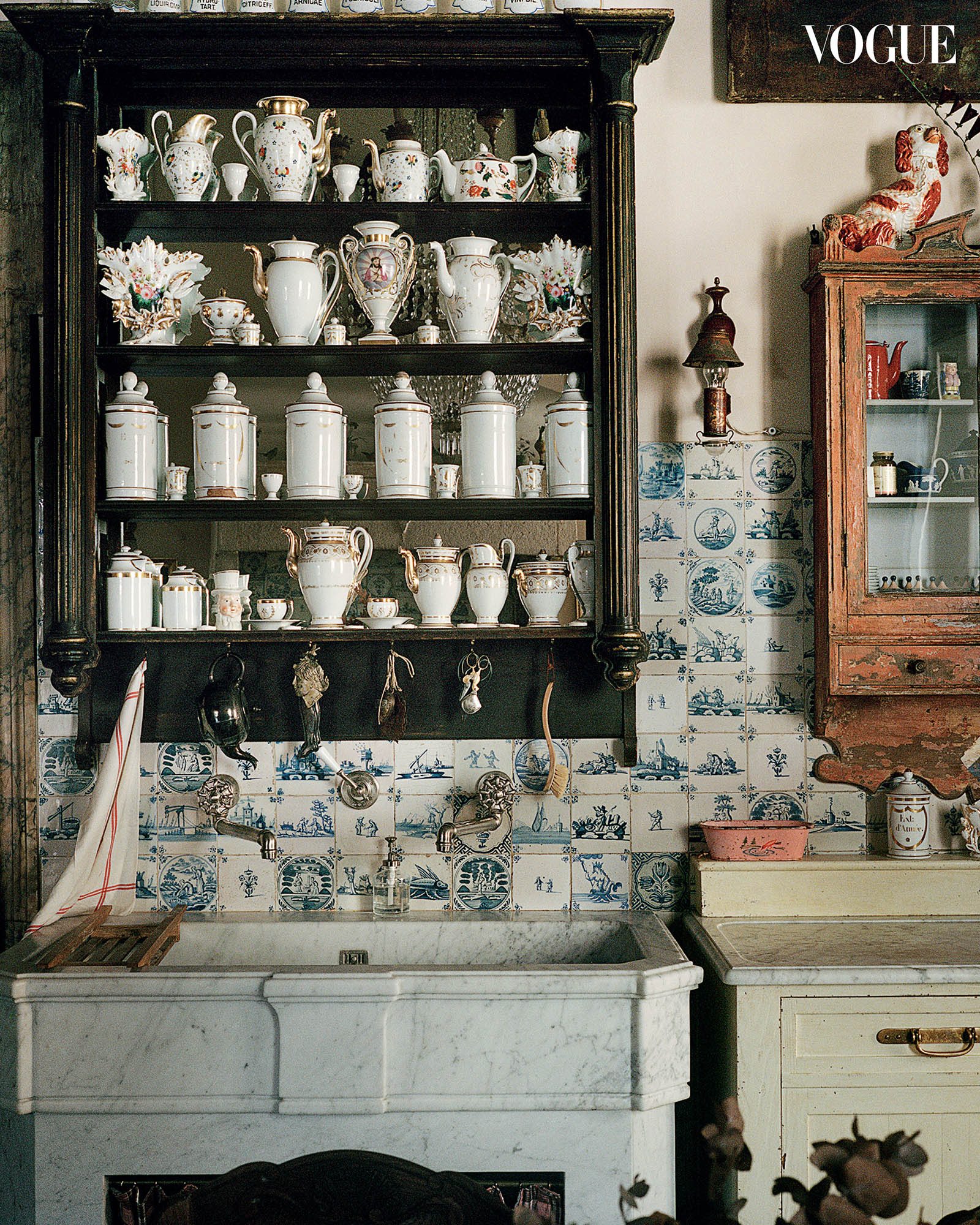
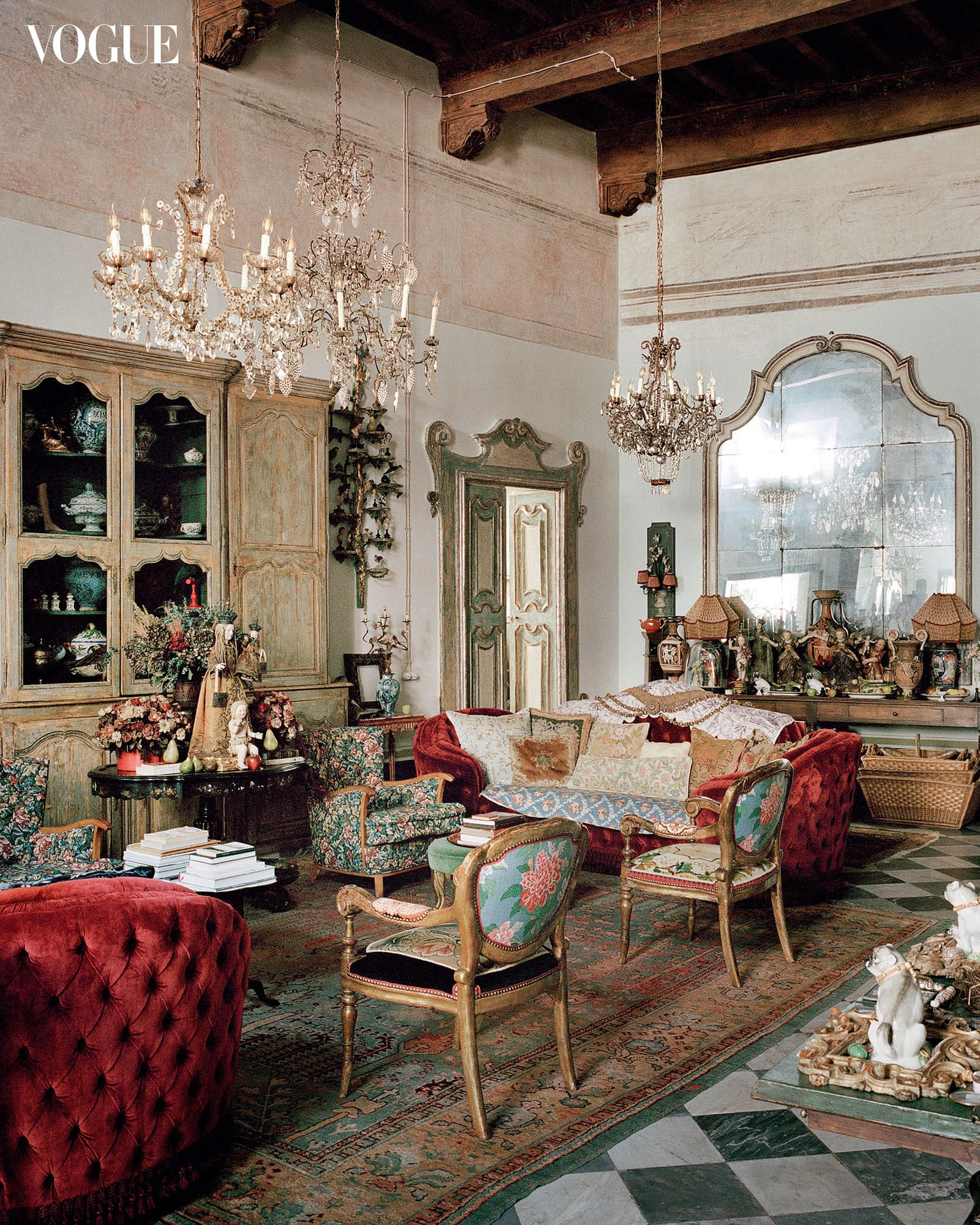
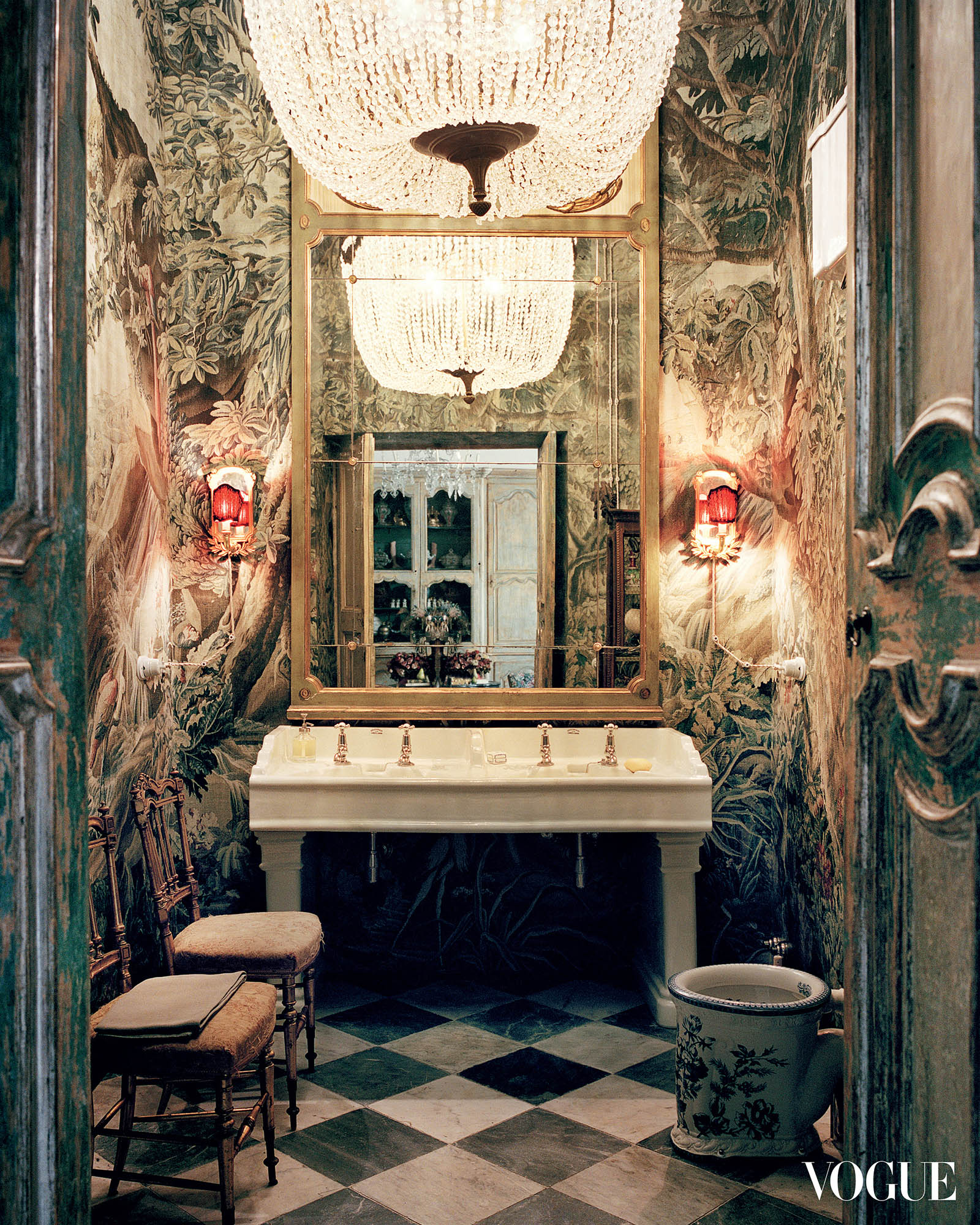
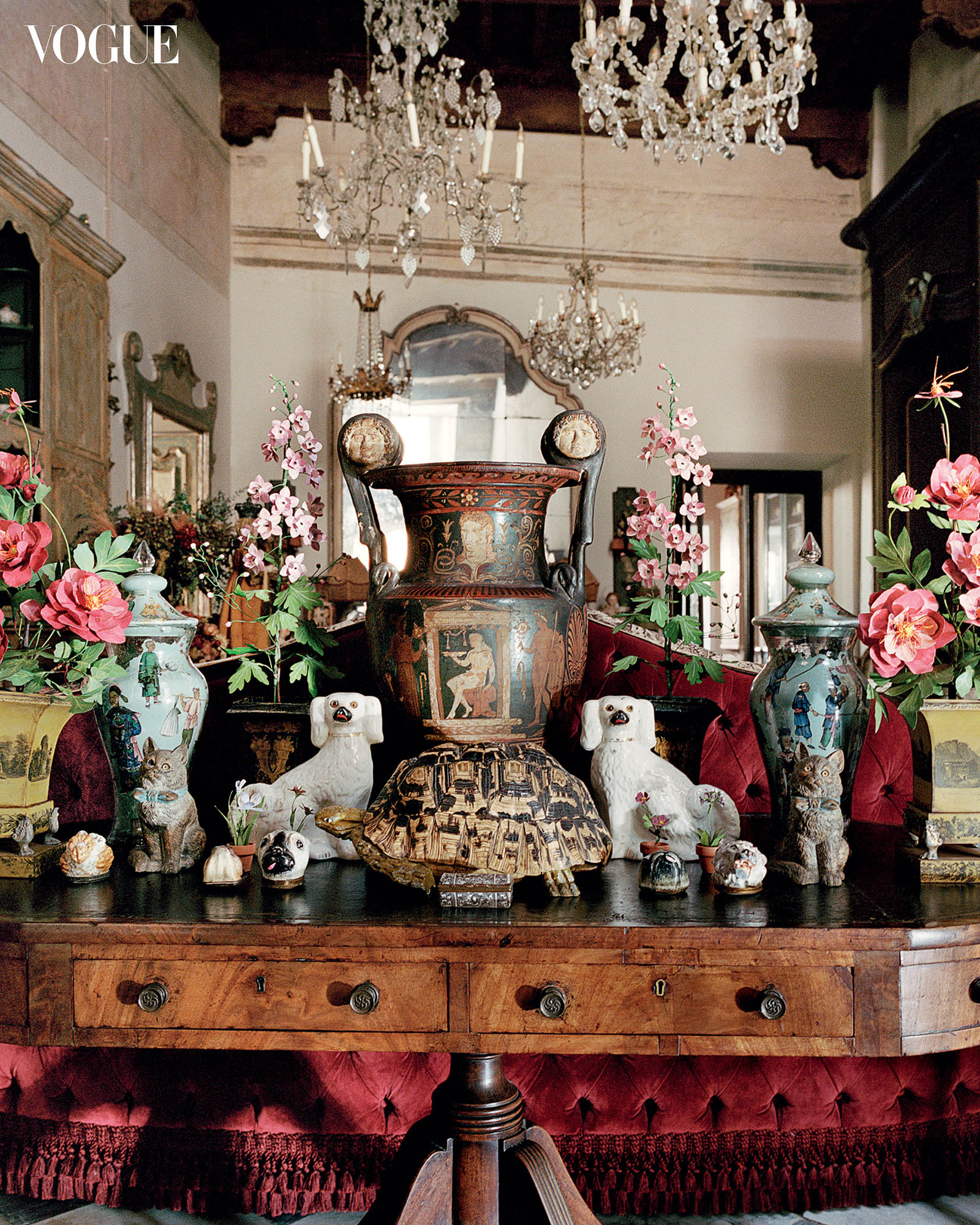
When Alessandro first came to see the apartment in the Palazzo Scapucci, it was a dark, illogical place, with low Styrofoam ceilings and no allure. “Every hall was filled with crammed rooms that opened onto more crammed rooms and small windows, but I kept coming back and observing from the sidewalk. When I fall in love, I don’t court houses, I stalk them.” He met the owners, three perfectly bizarre Roman characters: an uncle, a nephew, and an accountant who used the apartment as an office, and something of a hideaway for friends. “It already had this karma of belonging to multiple people,” he says. “It was a place for communal living.” Alessandro knew buying the house would be a huge undertaking, but ultimately decided to go for it.
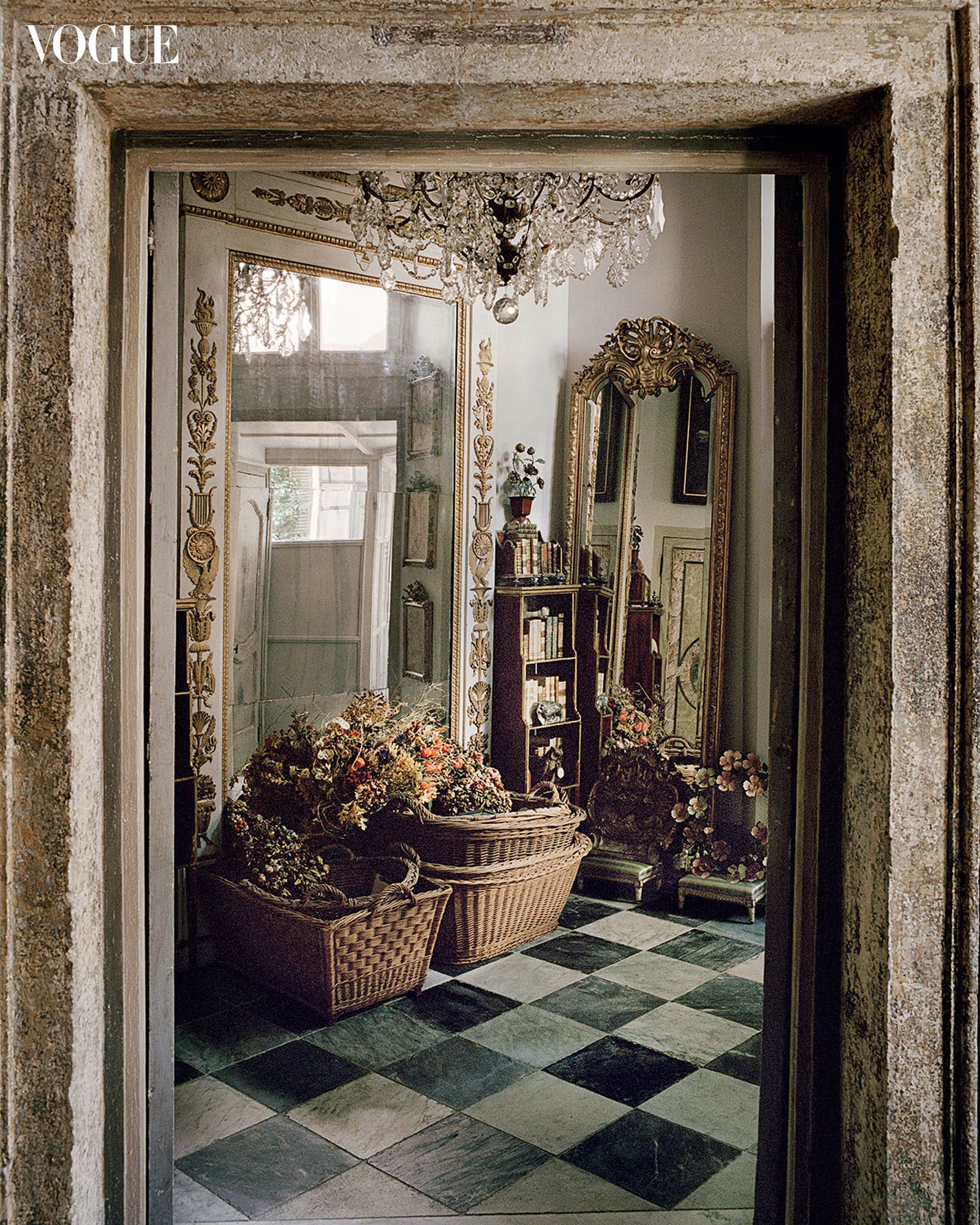
Ancient straw baskets and a late-18th-century Tuscan mirror. Opposite, clockwise from top left: Another view of the kitchen; the largest living room; a collection of vases, painted copper plants, and figurines from the same space; a guest bathroom.
One of the many incredible things that happened in the work that followed was the discovery of the original roof beneath the suspended ceiling. It was filled with engravings, frescoes, those papal insignias, fleurs-de-lis of the kings of France, and a shield with the symbol of the Della Rovere family. Alessandro spent hours on the scaffolds. “I became friends with every centimeter of that ceiling,” he says, and laughs, “though I probably gave the restoration team a nervous breakdown too.”
Lazy church bells ring in the distance. We have lost track of time talking about ghosts and discoveries, but now it is time for a tour. “Are you sure you’re ready?” Alessandro asked with a grin. His dogs, Bosco and Orso, wag their tails.
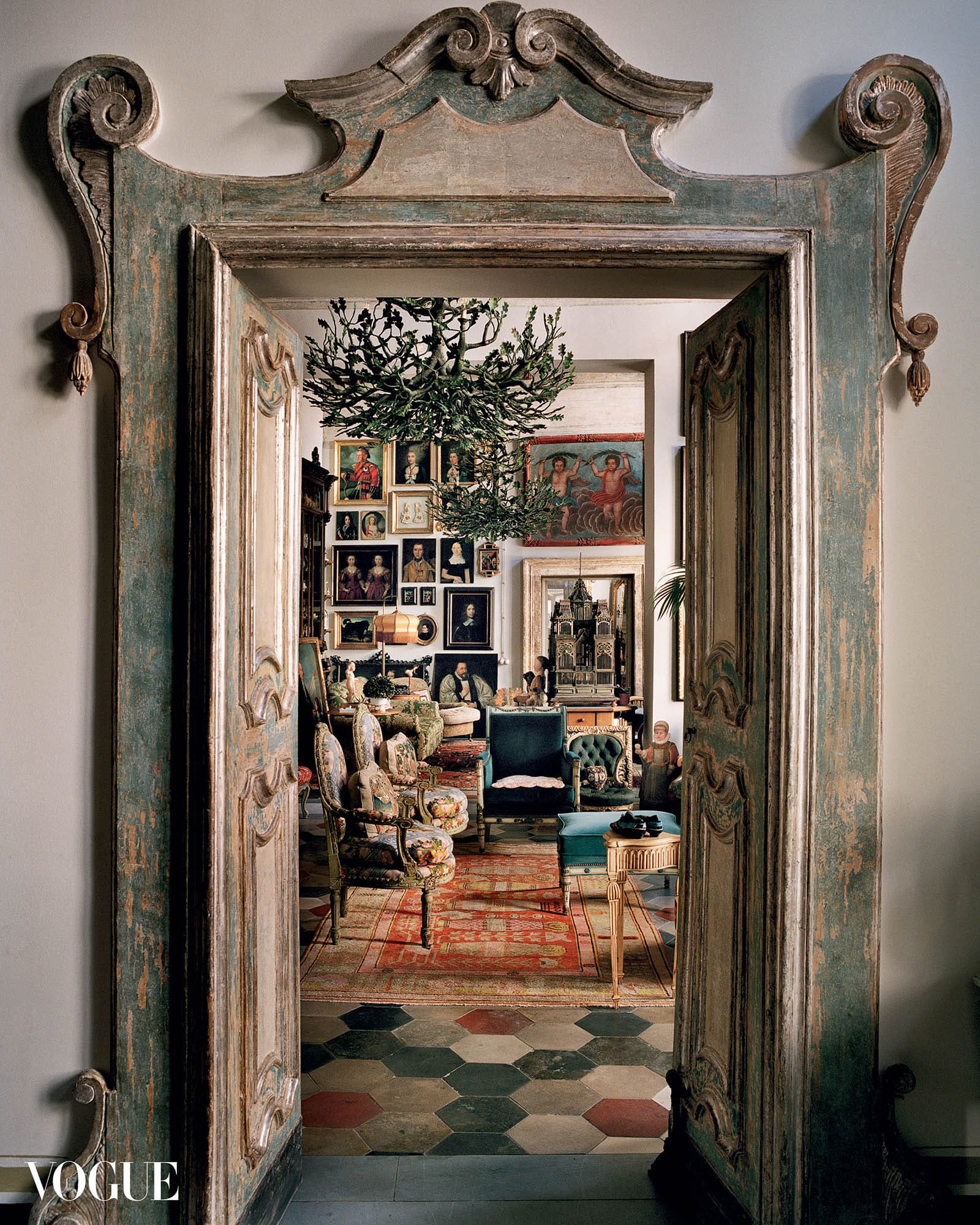
Above: A sidelong view of the second living room, with its matching chandeliers. Opposite: The bedroom, where an old Venetian door frame now functionsas a splendid headboard. In this story: hair, Carmen Di Marco and Mimmo Laserra; makeup, Tanja Friscic. Details, see In This Issue.
In a second living room hang a pair of oak-branch-shaped chandeliers. “I never light my chandeliers,” he says. “I use them as furniture pieces. I like to see them in space.” The luminous kitchen, the heart of any Italian home, is flooded with midday Roman sunlight, irradiating Alessandro’s beautiful collection of Dutch Delft tiles and ancient wood-and-glass cabinets. A flight of marble steps brings us to a work studio and library, tucked in the iconic medieval monkey tower: “the most beautiful room in the house,” Alessandro says. Lately he’s been sneaking in here and pulling poetry books from the shelves. It’s a kind of meditation as he ponders his next steps and his own suspended moment.
“It’s obvious I need oxygen now and it’s ironic that in reading all these poetry collections, I became so interested in the white space on the page and what it reveals about the words that inhabit it.” He gives me a mischievous grin. “Look at this,” he says and opens a hidden passageway in the bookcase, the kind of revolving library door kids dream about. The original building came equipped with many such vaults and portals, and Alessandro has taken advantage of them. Another vault, he explains, is hidden in his wardrobe (my favorite room as it features its own bathtub and a balustrade, and is filled with glass doors decorated with prints and textiles Alessandro designed himself). We cross through the dining room, where the table is piled with pens and books, including a thick anthology by the late poet and musicologist Amelia Rosselli. Then to the bedroom, with a beautiful Venetian door frame he’s reworked and adapted as a headboard. Next is Alessandro’s studio, accessible via a series of corridors, which is a work in progress, populated by boxes and perfectly organized archives of things like old Indian glass paintings and marionettes. Alessandro lifts a ladle out of nowhere. “It’s crazy, I started opening boxes the other day and found this ladle collection.
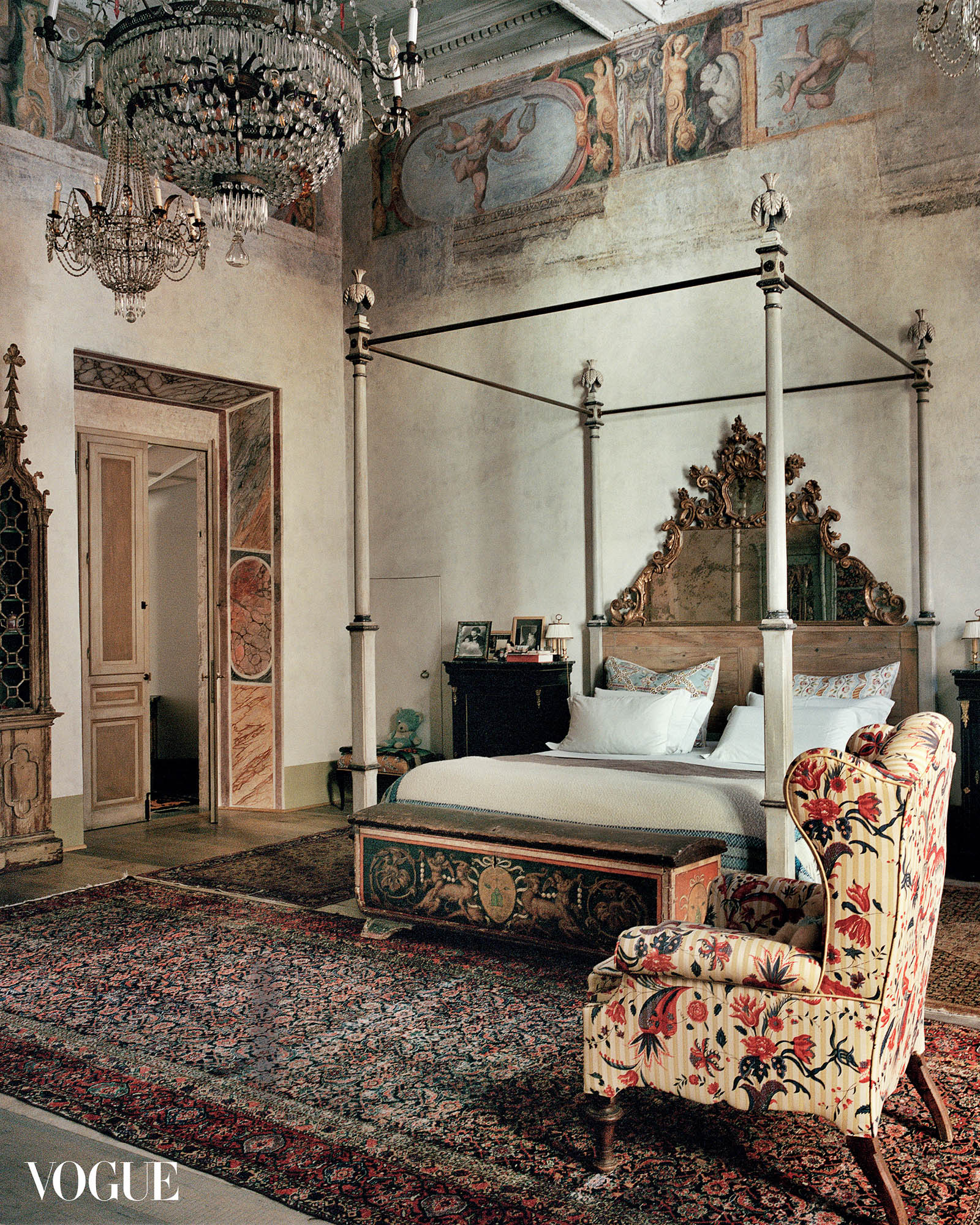
I can’t believe how many of them I have.” We climb several stairs and past more rooms than Alessandro can show me. “It’s never-ending,” he says as we make our way out to the terrace, and the Sant’Antonio dei Portoghesi’s organ, the most ancient in Rome, fills the air. Through the leaves of the lush plants, rose bushes, and banana trees, we catch glimpses of passersby on the streets below. Alessandro is a nightwalker, a detail that I find incredibly romantic, but he also likes to get lost in the city during the day.
